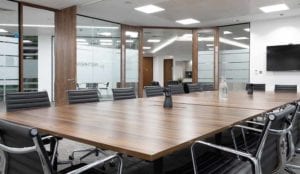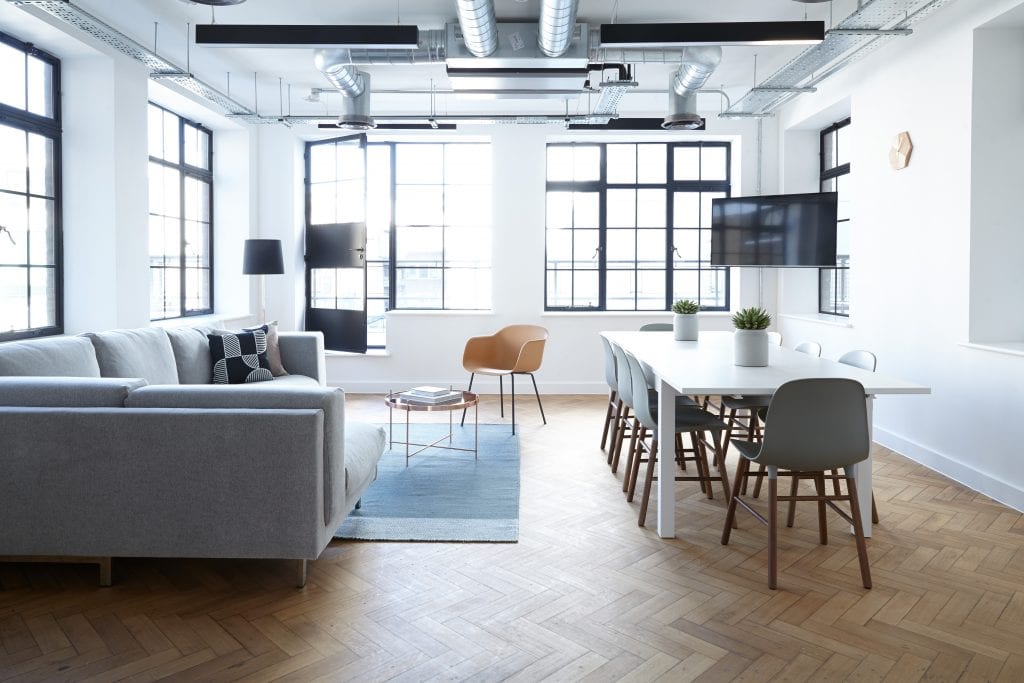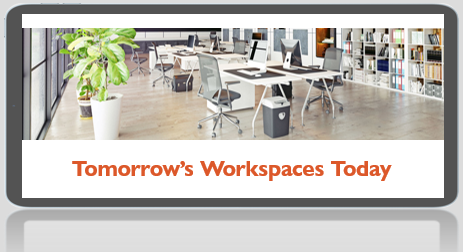7 things to consider when relocating an office
Moving into a new office is an exciting time for any business but for those managing the relocation, it can be hugely stressful. A survey by E.ON found that moving premises is the second most stressful task that managers have to deal with. As a result, a colossal 78% of companies actually delay moving, opting to stay in inefficient, cramped and costly facilities just to avoid the stress of it all.
If you are responsible for any kind of office relocation, it’s vital that disruption is minimised and that new facilities meet the current and future needs of your company. With relocations so critical to your business and colleagues, it’s up to the office moves project manager (normally the facilities manager) to organise, manage and procure every aspect of the move with great detail, yet as seamlessly as possible.
It’s unlikely you will be tasked with many office relocation projects in your career, and for many, it will be your first and only time managing a move.
To ensure you avoid the most costly mistakes of a relocation project, we’ve put together seven essential things you need to consider to successfully manage an office move project:
1. Budget
How much is your relocation project going to cost?
When moving offices, the costs can very quickly rack up. Budgets can be easily overshot simply due to delays, oversights, and issues cropping up unexpectedly. The project manager will likely be responsible for managing this budget which could include costs such as interior design and new stationery – but usually exclude legal and property fees.
Sticking to your budget can be equally as hard as actually setting it. Nasty surprises and hidden costs can crop up from things you may not have even thought of. Here are some common items that many budgets overlook:
- Have you considered the cost of dilapidations or reinstating the office you are vacating?
- Do you have any leased or specialist equipment that requires special handling? This could also include art collections or chemicals
- Are there any access or timing limitations that will impact the cost of your relocation?
It’s important that you can ascertain the full costs of your office relocation before you begin. Sizeable costs can be misjudged – or missed entirely – just because you haven’t experienced a move before. You may find it beneficial to discuss your move with experienced office relocation services that may be able to shed light on the full costs of your move!

2. Interior Solutions and Office Design
How should you design your new office space?
Depending on the state of your new modern workspace, it may need substantial refurbishment or a little bit of touching up. Either way, you will need to find an office fit-out company that will provide you with the interior solutions you need – ideally, a company that provides a turnkey solution whilst delivering in terms of timeline, a high standard of finish and within your budget.
If you can approach a company with a clear idea of your constraints and needs that fit-out company should be able to take full control of the design and concept of your office – should you want to delegate this responsibility. This will help you reduce your workload and any stress, as they will manage your interior from concept to handover whilst keeping you in the loop at every step of the journey.
Maximising your office space may also be a key objective for you, particularly if your company is growing quickly or moving to a slightly tighter new location. This is where the services of a space planner can come in handy. Speak to your relocation company, as they may be able to assist with the common issues that come with space planning and if they also provide refurbishment services then you can benefit from having to manage fewer contractors and simplifying the service integration element of the move.
3. Communication
Who needs to know that you are moving?
Effective communication or office relocation announcement is essential to the success of a relocation project. Although it may not be the facilities manager’s responsibility in every case, if it falls under your remit, it’s important to have a strategy in place to spread the word of your move. There are many different ways you can tell customers, suppliers, landlords and other contacts including:
- Distribute flyers or change of address cards with customer receipts and invoices
- Send out an email or postal campaign
- Place a notification on your website
- Add a P.S. message to your emails
- Social media posts
- Don’t forget to update the address on your Google listing, office stationery, website and email footers.
Frequently, the success of a relocation project is reliant upon the ‘soft’ elements of a move. Keeping employees on your side and in the loop is an important part of relieving any anxiety associated with moving office. Listening to their concerns will also help you address some of the problems associated with moving and ensure that you’ve covered every base.
Make your service providers aware of your move as early as possible in the relocation project. You may have to serve notice periods on some of these, so reviewing your contracts and researching how to notify them formally is necessary.
Also: don’t forget to let your bank and insurance companies know you’re moving! You may also want to let your old and new neighbours know your arrangements.
4. Office Furniture
What will you do with your existing office furniture?
When it comes to office furniture, it’s not unreasonable to think that you have choices: one, you take it with you to your new location, or two, replace it with entirely new furniture. However, you may be able to achieve the benefits of both by refurbishing or remanufacturing your office furniture.
It’s possible to remanufacture your office furniture to make it as good as new, to meet new working requirements or reach the modern design standards set by architects. This process can be highly beneficial as it’s less wasteful and considerably cheaper than buying new – remanufacturing office chairs can cost up to 80% less than buying new. It’s also an extremely good way of point-scoring to accumulate BREAAM or SKA rating points.
An integrated services provider should be able to provide you with a range of options for your old furniture. They may have the capacity to turnaround office furniture remanufacturing projects quickly and provide you with other options for your old furniture, like marketing or selling it on your behalf.

5. IT, Data, Computers and Connections
How will you relocate your electrical equipment and IT, or will you take the opportunity of the move to upgrade to new IT kit?
When considering relocating IT equipment, there’s no shortage of points that you need to consider. As they’re critical to the running of most modern businesses, it’s essential you take special steps to care for this equipment.
Desktops
Each of your colleagues’ setups will be unique, both in terms of configurations and screen equipment. Before moving, you will need to audit equipment setups to recommission equipment ready for use in your new office. Once these have been very carefully moved, they then need to be recommissioned and connected to sometimes complex network infrastructures. These systems host sensitive data that needs to remain secure, hence why it is essential you use CTC cleared engineers to recommission equipment.
Data Centres & Servers
Servers that host business-critical data need to be very carefully and safely relocated with downtime reduced to an absolute minimum. Migrations need to be seamless, secure, and optimally scheduled to minimise downtime.
Breakages, failure, or stolen data can be hugely expensive. It’s important that equipment is monitored in transportation and moved using specialist packaging to keep it safe and prevent static build-up.
Leased Equipment
For some of your equipment, you may need to request approval from your vendor before you can even move it or risk breaking warranty or service cover agreements. For some specialist equipment, the vendors themselves may insist upon moving it or if you are responsible for moving the leased equipment yourself, the vendor may require you to follow an approved moving process. Your obligations when relocating leased equipment should be detailed in your contract documentation.
Telephones and Internet Connections
You will need to allow plenty of time to ensure phone systems and internet connections are live from the first day in your new office. Whether you use a new service provider or are staying with your existing one, you need to make sure connectivity isn’t lost in the transition between offices. Make sure you are in a position to identify, diagnose and fix problems before the moving day.
If you are moving within the area covered by your existing telephone exchange, you will be able to keep your existing telephone number. If you have a 0800 or 0845 number you can take them wherever you move in the UK. If you have to change your number, it is possible to have your old number redirected to your new one at an additional cost.
6. Old Equipment and Unwanted Furniture
What will you do with your unwanted furniture or IT equipment?
Relocating offices is a great opportunity to declutter, sort old files and get rid of redundant furniture and legacy IT equipment. There’s little point spending time/budget on moving anything you are not going to use.
Yet, disposing of these items can prove expensive. If you have unwanted furniture, IT or electrical equipment, there are easy ways you can responsibly and sustainably clear these items, saving you disposal costs and preventing waste. If you choose to use a sustainable clearance provider, then they can donate office furniture, IT, and electrical equipment or even resell items that you no longer need. If items cannot be reused effectively secure recycling will still make sure costs are reduced.

7. Office Relocate Plan
Have you got the resources you need to pull off a seamless move?
Whether you are working with an integrated office moving service provider or simply a removal company, having a structured moving plan is critical to ensure as little disruption to business as possible.
Integrated services providers will provide you with the knowledge, expertise, and resources you need to ensure the move is carried out to high standards. Additionally, they will provide support before, during, and after your move, giving you the help you need to minimise disruptions.
This can include providing packing and unpacking services to help ensure everything is transferred safely to the correct location, furniture dismantling, and reassembly, cleaning of existing and new areas, and manning of help desks.
Once you’ve completed the move with as little disruption as possible, take the time to celebrate with a move-in party for staff and clients!
What Makes Crown Workspace Stands Out

Support All Sizes Move

Expertise Dedicated Staffs

Minimize Operation Downtime
Crown Workspace UAE understands the importance of getting to know our clients so we can plan and deliver smooth commercial moving, with minimal downtime.
We employ a dedicated team of 120 – who are all fully trained and security cleared to the highest level.
Uniformed staff and a liveried, fully-tracked fleet with air ride suspension to protect your assets, are provided as standard.
Related stories
Around half of all Facilities Managers plan to downsize their office space in the next three years. Our recent survey, conducted across the U.K., U.S., Singapore, India, New Zealand, and Hong Kong, interviewed over one thousand office workers and facilities managers to explore changing office habits and attitudes.
In our recent article, “Is it time for offices to get personal again?” we discussed the importance of personal workspace environments for productivity and morale. There’s another aspect office designers and facilities managers need to address urgently: technology. Modern workplaces face a particularly post-COVID conundrum: Employees finding their home setup better equipped, and more comfortable, […]
The open office was sold as the modern solution to just about any workplace problem for decades now: siloed workers? Open them up (literally) to collaboration. Bad communication? Put everyone in a big room. Worried about productivity? Create a vantage point. And so, walls came down, spaces opened up, and collaboration was supposed to flourish. […]





























